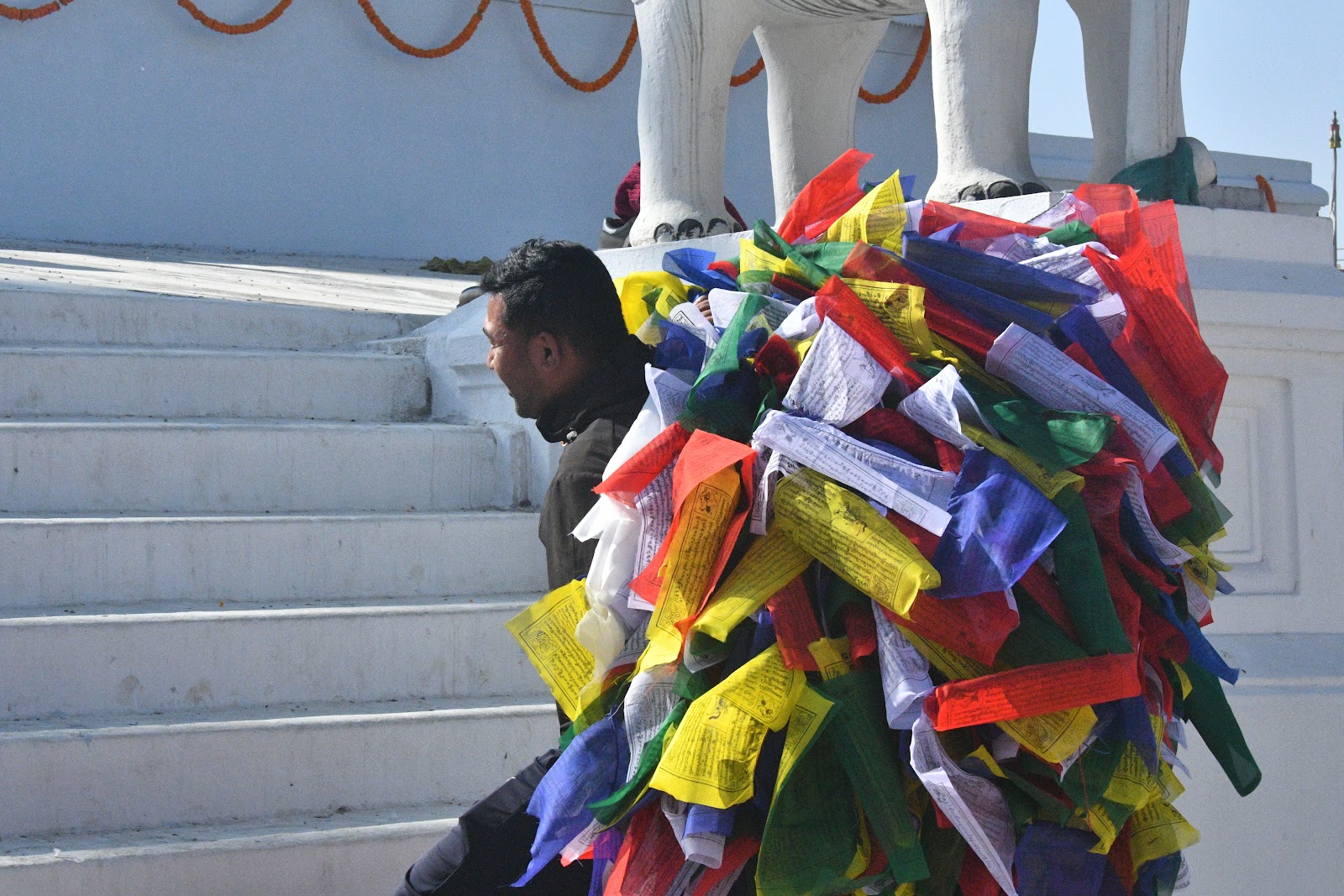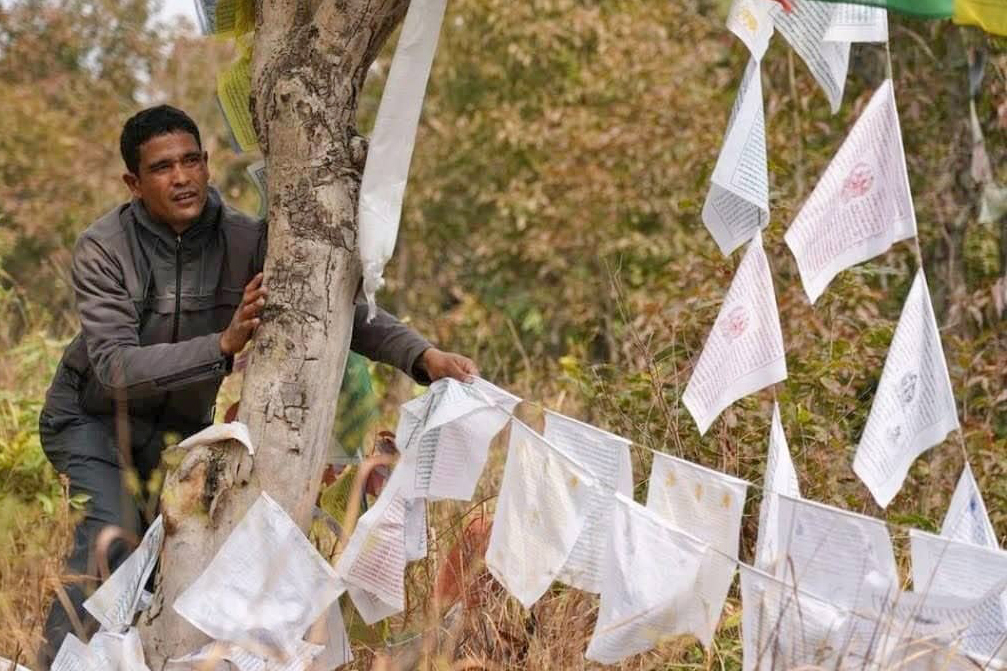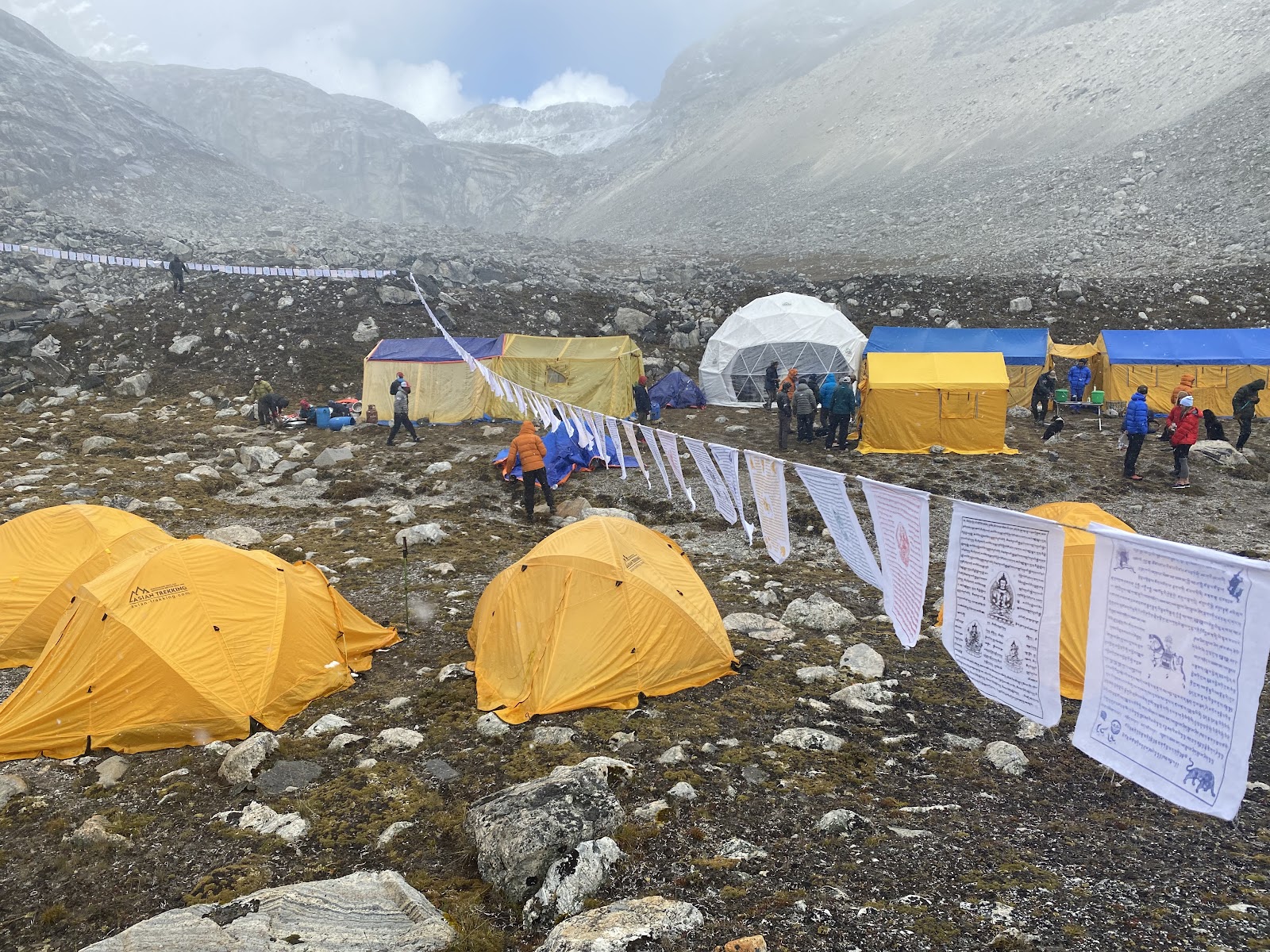As the Everest season approaches again, the towering peak beckons climbers from around the globe. Among the rituals performed at its basecamps and summit is the tradition of adorning it with prayer flags, symbolising victory and spreading blessings to all corners of the earth. However, amidst the iconic allure of Mount Everest, a stark reality looms: the mountain’s summit has become a symbol not only of triumph but also of human impact.
While the visible garbage strewn across its slopes captures headlines, there exists a less conspicuous yet equally significant form of waste — synthetic prayer flags. These seemingly harmless symbols of religious and cultural significance have quietly amassed into an overlooked source of environmental harm. As climbers ascend Everest, bearing these synthetic flags as offerings, they inadvertently contribute to the accumulation of non-biodegradable waste in one of the world’s most pristine environments.
In recent years, the use of synthetic prayer flags has become increasingly prevalent. These flags, crafted from synthetic fabrics and adorned with harmful dyes, are strung together with nylon ropes. While they may serve their purpose of adding colour to the landscape and carrying prayers on the wind, their impact on the delicate ecosystem of the Himalayas cannot be ignored.
The extreme conditions prevailing at high altitudes expedite the degradation of synthetic prayer flags, resulting in the shedding of microplastics that disperse into the surrounding environment. These minute particles find their way into the delicate ecosystems of the region and, propelled by melting glaciers, eventually permeate our rivers. Subsequently, they settle onto the fertile farming lands, infiltrating the very essence of our agricultural practices. Tragically, this pollution poses a grave threat to both the flora and fauna of the region, disturbing the delicate balance that lies at the heart of Buddhist philosophy.

Recent research has shed light on another disturbing phenomenon: the entanglement and subsequent death of wildlife in nylon ropes used to hang prayer flags. In the serene Tsum Valley, the rugged landscapes of Upper Dolpo, and the sacred grounds of Halesi, nature thrives in its purest form. Yet amidst this beauty, a silent tragedy unfolds — one that threatens the very existence of the animals that call these regions home. From the dense forests of Tsum to the remote corners of Upper Dolpo and the hills of Halesi, nylon ropes present a deadly hazard to creatures roaming freely.
Monkeys, agile and curious, unwittingly become entangled as they explore their surroundings. For leopards, stealthy hunters of the night, and the cows and goats that roam the hills peacefully grazing, the ropes become invisible snares, trapping them in a fatal embrace. They are all at risk of falling victim to these seemingly harmless strands, their lives cut short by nylon twine used in the observance of a tradition meant to bring blessings and goodwill.


Is it enough to simply hang prayer flags in devotion, or must we also ensure that they do not become instruments of harm? The very essence of our tradition is at stake, as is the well-being of the creatures that share our world. In Buddhism, reverence for all living beings and the interconnectedness of life are fundamental tenets. To harm even the smallest creature is to betray these principles.
Moreover, the use of synthetic materials contradicts the essence of the Gyaltsen Tsemo, a very ancient origin of all prayer flags also known as victory prayer. True victory, according to Buddhist teachings, lies not in conquest or domination, but in harmony and respect for all beings. By perpetuating a practice that harms the environment, we stray from the path of true enlightenment.

In light of these concerns, it is imperative that we reconsider our approach to prayer flags in the Himalayas. As Sherpas, Nepalese, and members of the global mountaineering community, we have a responsibility to uphold the values of our tradition while also preserving the fragile ecosystems that surround us.
One potential solution lies in the adoption of biodegradable prayer flags. However, even this alternative requires careful consideration in consumption. Biodegradable materials may degrade more quickly than synthetics, but they still require resources for production. Moreover, the rapid increase of biodegradable prayer flags could lead to unforeseen consequences, such as increased demand for raw materials and energy-intensive manufacturing processes.

So while biodegradability presents a step in the right direction, it is essential to approach the adoption of these alternatives with caution and mindfulness, ensuring that our efforts to minimise harm do not inadvertently contribute to it.
Ultimately, the issue of synthetic prayer flags calls for a broader conversation within the Buddhist and mountaineering community and beyond. It is not enough to simply replace one harmful practice with another. Instead, we must strive to find solutions that align with our values and respect the sanctity of the natural world.

As we prepare for another Everest season, let us not only conquer the summit but also conquer our own ignorance and greed. Let us recommit ourselves to the principles of compassion and stewardship that lie at the heart of Buddhism. Only then can we truly honour the spirit of the mountain and ensure its preservation for generations to come.











